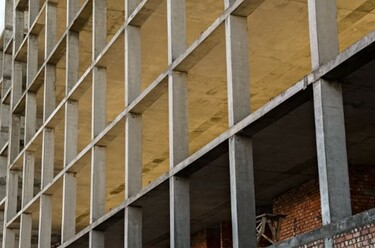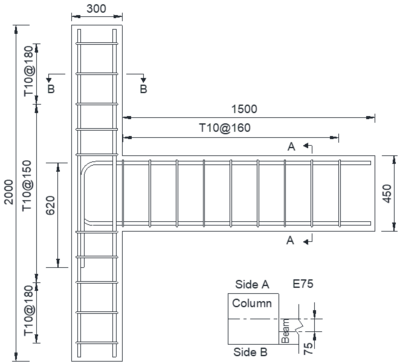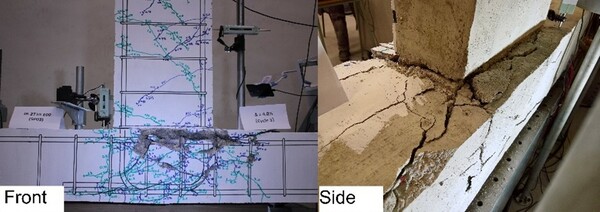(只提供英文版本)
Seismic Behaviour of Beam-Column Connection in Non-Seismic Regions
Ir Dr Simon Wong, Faculty of Science and Technology
Hong Kong is a region with low or moderate risks of earthquakes. Many of its existing reinforced concrete (RC) (concrete with embedded steel bars) building structures are traditionally designed without any abilities to resist seismic activities e.g., earthquakes. Neglecting the seismic design in building structures means they will be more sensitive to failure in an earthquake.
In RC moment-resisting frame structures - the rectilinear assemblage of concrete beams and columns that forms the structural frame of buildings (Fig. 1), beam-column joints are the key components. Beam-column joints are the linkage point of the adjacent beam and the vertical column. They provide a rigid connection and play an important role in transferring the internal forces between the beams and columns. In post-earthquake research, shear failure of beam-column joints shows that these mechanisms are destroyed, leading to the collapse of many RC buildings.

Figure 1. Reinforced concrete moment-resisting frame structure
In practice, the type of beam-column joint that is largely required under architectural considerations is the eccentric beam-column joint (Fig. 2), which have been extensively used in existing RC frame structures. The eccentricity of the joint is formed by the difference in the axis between the beam and the column, which generates additional internal forces and affect the seismic behaviours of the eccentric joints.

Figure 2. Typical Specimen of eccentric beam-column joint
Ir Dr Simon Wong of the Faculty of Science and Technology investigated the behaviour of non-seismically designed RC beam-column joints. RC exterior beam-column joints were designed and created according to the Hong Kong Code of Practice (HKSUC 2013) and tested under a reversed cyclic-load. Dr Wong examined the effects of eccentricity in the joints when subjected to simulated seismic loading (Fig. 3) and compared the results with the predicted values of design codes and numerical models to study the behaviour of eccentric beam-column joints. The study also developed an empirical model to facilitate the design and evaluation of joints’ strength.
The study found that the eccentricity between the centerline of the beam and column had significant effects on the shear strength and seismic performance of RC exterior beam-column joints with non-seismic design details. When the eccentricity increased to 1/4 bc (column width), the shear strength decreased, and the ductile failure changed to brittle joint failure. Dr Wong also observed that the concrete on the eccentric side was crushed, whereas the concrete on the other side maintained its relative integrity. The result showed that eccentricity led to asymmetrical stress distribution in beam-column joints, and had negative effects on the seismic performance of joints. He also commented that the horizontal links in joint cores can improve the shear strength and therefore enhance the seismic performance of joints.

Figure 3. Crack patterns and specimen
The study found that using existing design codes cannot accurately predict the shear strength of non-seismically designed beam-column joints. For example, there was one seismic design code that overestimated the shear strength of joints by 30-60%. Hence, it is necessary to develop reasonable analysis methods in the field to improve the seismic performance of eccentric joints with non-seismic details under low or moderate earthquakes. Dr Wong showed that the shear strength of RC beam-column joints predicted by the empirical model in this study are more accurate than those predicted by other considered codes. The empirical model from the research is simple to use and can be used in practice for seismic design purposes to prevent premature shear failure of beam-column joints in Hong Kong building structures.
The research was fully supported by a grant from the Research Grants Council of the Hong Kong Special Administrative Region, China (UGC/FDS25/E08/17).
